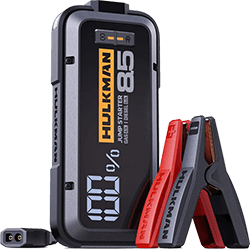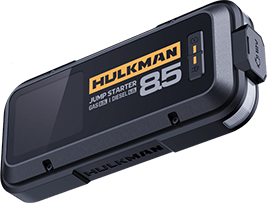Recent Articles
-
Mapping America’s Solar Landscape: Regional and Seasonal Variations November 11, 2025
-
Why Solva Solar Panels Stand Out: From Consumer’s Comment November 06, 2025
-
Unleashing Solar Power: Tips for Using and Maintaining Portable Solar Panels November 03, 2025
Featured Products
note
Mapping America’s Solar Landscape: Regional and Seasonal Variations
The United States’ sprawling geography and varied climates create a diverse solar energy map, with resources shifting dramatically by region and season. From the sun-soaked Southwest to the cloudier Northeast, these patterns are shaped by natural factors like latitude and weather, as well as human efforts through policy and technology. This blog explores the spatial and temporal dynamics of solar potential, offering practical tips to optimize portable solar panels and generators for camping, RV trips, or off-grid adventures across the country.
In this article, we’ll cover:
- Spatial Patterns: Sun Belt vs. Cloudy Coasts
- Temporal Rhythms: Seasonal and Daily Swings
- Driving Forces: Nature and Policy at Work
- Practical Tips for Solar Success
- Portable Power for Every Region
- Conclusion
Spatial Patterns: Sun Belt vs. Cloudy Coasts
Solar irradiance—the sunlight energy hitting a surface—follows a clear west-to-east gradient. The Southwest, including Arizona, New Mexico, Nevada, and southeast California, leads with annual averages exceeding 6.5 kWh/m²/day, peaking at 7.5 kWh/m²/day in deserts, enough to power a small appliance for hours from one square meter [https://www.nrel.gov/gis/solar.html]. Low latitude and minimal cloud cover make this “Sun Belt” a solar powerhouse. Central states like Texas and Oklahoma, with flat plains ideal for large setups, see moderate irradiance of 5.0–6.5 kWh/m²/day (DIY Solar Panel Forum).
The eastern seaboard and northern regions—New York, Massachusetts, and Alaska—average below 5.0 kWh/m²/day, limited by frequent clouds, humidity, and lower sun angles in temperate climates. Hawaii, despite its tropical location, sees reduced output on windward slopes due to trade-wind-driven rain, trailing the mainland’s arid west. These differences guide where portable solar shines or needs extra optimization.
Temporal Rhythms: Seasonal and Daily Swings
Solar availability varies with seasons and daylight, with effects amplified by region. Northern states like Minnesota hit 6.0 kWh/m²/day in July’s long, high-angle days but drop to 2.0 kWh/m²/day in January’s short, dim winters—a 60% swing(energy.gov). Southern areas like Florida, closer to the equator, see smaller shifts, with summer-to-winter gaps under 30%. Daily cycles also vary: Western deserts like Phoenix boast steady 14-hour summer days and 10-hour winters with clear skies, while eastern cities like Washington, D.C., face summer storms or winter overcast, cutting usable sun to eight hours or less. Storms, like Midwest dust events or Southeast hurricanes, can briefly halt output, highlighting the need for storage in portable systems.
Driving Forces: Nature and Policy at Work
Latitude sets the baseline, with lower angles in the Southwest boosting year-round exposure. Terrain shapes weather—the Rockies block Pacific moisture, creating sunny, dry conditions in the plains and Southwest(weather.gov). Clouds and humidity dampen eastern output, while the West’s clear skies maximize capture.
Human factors refine this picture. Federal tax credits and state incentives drive large-scale solar farms in the Sun Belt, like California’s Mojave projects. In the cloudier East, distributed rooftop systems and storage compensate for lower irradiance. High-demand regions, like the Great Lakes industrial zone, adopt advanced panels despite modest sunlight, balancing natural limits with tech. Falling panel costs further democratize access across regions.
Practical Tips for Solar Success
Site Selection: In the Southwest, use minimal tilt for direct sun; in the East, adjust angles seasonally for low-angle light.
Timing Strategy: Charge during peak hours (10 AM–2 PM) and store excess for nights or cloudy spells.
Gear Up: Choose high-efficiency panels for low-light areas and pair with MPPT controllers for variable conditions.
Portable Power for Every Region
America’s solar diversity calls for adaptable tools. In the Southwest’s intense sun, portable panels maximize output with little effort, but storage is key for evening use. The Hulkman Mega, with its 576Wh NCM battery, captures peak energy and powers devices like fridges through desert nights, its 94V0 flame-retardant housing shrugging off heat. In the cloudier Northeast or Midwest, Solva 100W or 200W panels, boasting ≥23.4% efficient SunPower IBC cells and waterproof fabric, thrive in -4°F to 149°F conditions, squeezing more from patchy light(SolarPanelTalk). Paired with the Mega’s 400W solar input and ST-25 connector, they ensure reliable charging for camping or emergencies, while the Mega’s 19.13 lbs build and Wi-Fi/Bluetooth monitoring make setup and tracking effortless in rainy or snowy conditions.
Conclusion
America’s solar potential varies widely, richest in the Southwest, steadier in the South, and spottier in the East, with seasons and daily cycles adding complexity. By understanding these patterns—driven by geography, climate, and policy—you can optimize portable solar setups anywhere and keep it well-maintained in daily life. Whether in Arizona’s deserts or New England’s forests, Solva panels and the Hulkman Mega deliver dependable, clean energy, powering your adventures with ease.






















